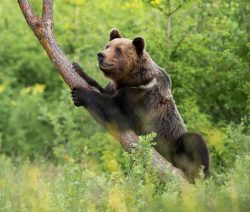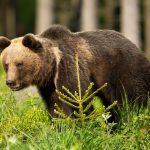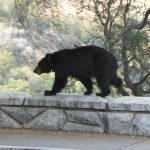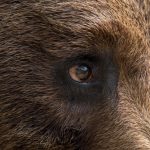Yes, climbing a tree is no problem for bears.
Bears are very adaptable and agile considering their size.
Even polar bears can climb trees (but only when they are cubs)
Can All Types Of Bear Climb Trees?
You can split the bears into three groups for their ability – and need – to climb trees. It depends on their habitat and size whether they climb trees all the time or not.
Spectacled Bears, Sun Bears & Sloth Bears:
These three smaller bears live mainly in the tree canopy as a lifestyle – sometimes spending days up there, sleeping, eating, and raising their young. Often found inland and in mountainous areas – they are well adapted to life in the trees. These bears don’t often hibernate due to the surplus of food and warmer temperatures.
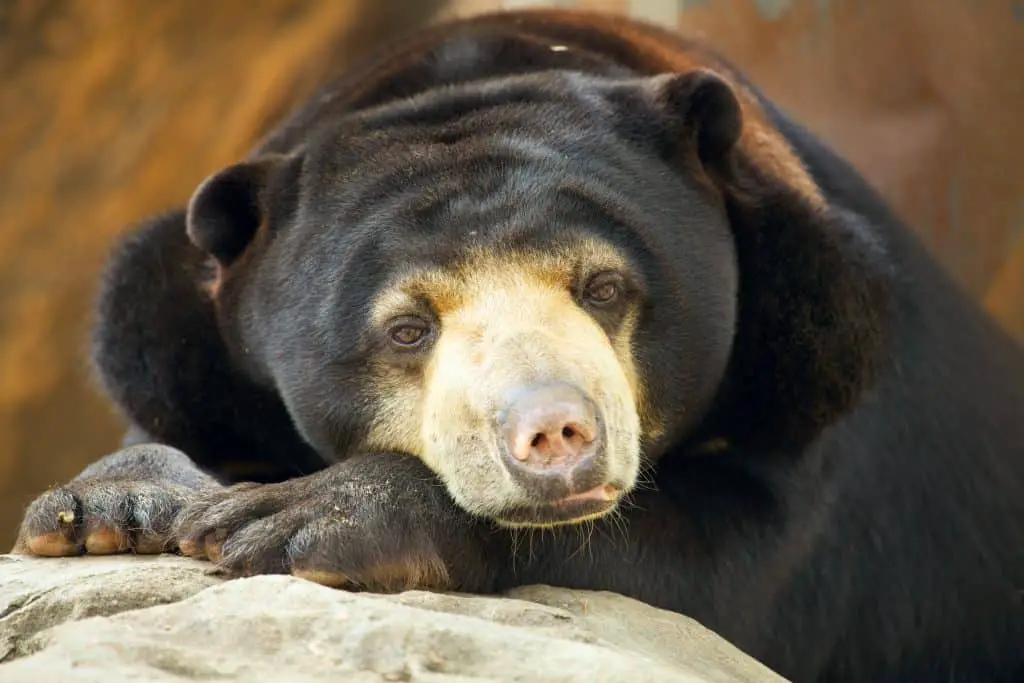
Sun Bears are the smallest of all bears (25-65kg) and have special physical adaptations to climb trees including powerful fore-limbs and sharp claws. Found throughout south-east Asia, they feed on fruits, termites, beetles, honey, and the occasional bird.
Sloth Bears are larger (55-145kg) and spend their time split between trees and on the ground. They easily climb trees, with their sickle-shaped claws, to feed on termites, or just to relax. Adult Sloth Bears don’t climb trees to avoid threats – they like to stand their ground. But if they have cubs, they will carry them up into the trees for safety.
Spectacled Bears are the biggest and are the only bear to live in South America. They absolutely love climbing trees (even though they weigh around 65-115kg) and are often seen making a nest or platform up in a tree to rest, sleep or eat. It is reported that their sense of smell is so strong that they can smell fruit about to ripen from the ground and will often climb that tree, make a platform from branches, and wait!
Brown Bears, Black Bears and Giant Pandas:
These larger bears often only climb trees for food and safety – mainly for their young. Feeding more on meat, berries, and bugs than the lighter bears – they spend more time at ground level and so trees aren’t as important for day-to-day living.
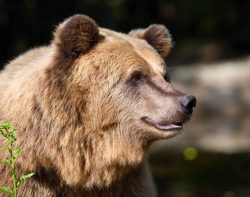
Brown Bears are widely ranging across Eurasia and North America. They are known as either Grizzlies (for inland populations) or Kodiak Bears when they are found on the coast – and can be more than 135-185kg a piece. Most adult bears are too heavy to climb trees – but they can if they need to. However, the pups with their lighter weight and sharper claws often scuttle right up a tree as a form of defense.
American Black Bears are wide-ranging and are one of the only bears that live, feed, and hibernate in trees! They have been divided up into 16 sub-species depending on where they live from Alaska to Mexico.
They vary in size massively too depending on habitat and season – with young females being as light as 40kg – and some record-breaking males at peak season being nearly 400kg. Needless to say – those males don’t often climb trees.
Asiatic Black Bears are closely related – and also spend most of their time climbing up trees. They have very strong fore-legs and large claws – so have no trouble scooting up a tree to feed or rest. Found mainly in the mountains – they are herbivorous and spend around half their life in the trees.
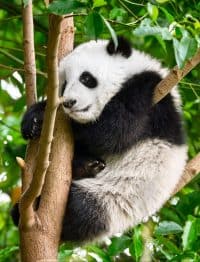
Giant Pandas – are the most well-loved of the bears and videos online of panda cubs show how skilled they are at climbing trees. The adults will climb trees for defense and rest if needed – but they are very much a ground-dwelling species. Their main food – bamboo – grows on the ground so that is where they spend most of their time. Eating.
What About Polar Bears and trees?
Polar bears are the odd one out for two main reasons:
1) There are hardly any trees to climb where they live anyway. Sea ice isn’t the best place for a sturdy tree to take root even if it wanted to.
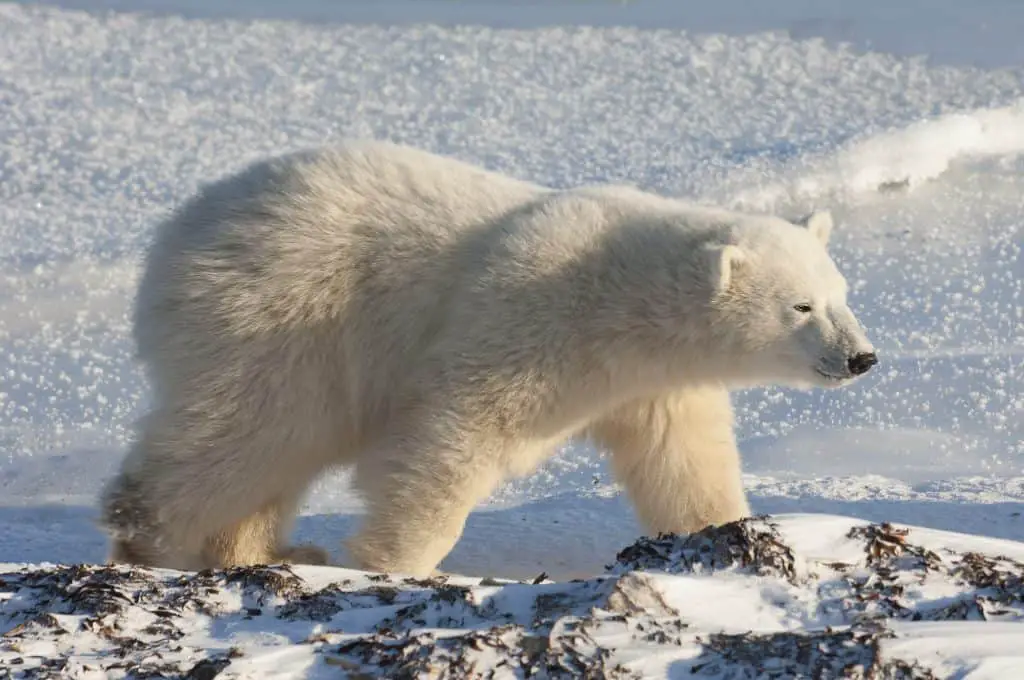
2) Adult polar bears are just too heavy. Their claws are adapted to walking on flat, hard ice so they can’t get a grip on a tree to pull up their own huge bodies. Male polar bears can weigh up to 700kg – the same as a speedboat or average caravan.
However, baby polar bears are usually born on solid ground and there can be small trees surrounding the safe space the mother has chosen to rear her young family. So, if scared by humans or other bears (they often meet both Black and Brown bears) they can shimmy up a tree in a flash.
So, if you want to know can all bears climb trees – then in a round-about way – yes. They all can.

